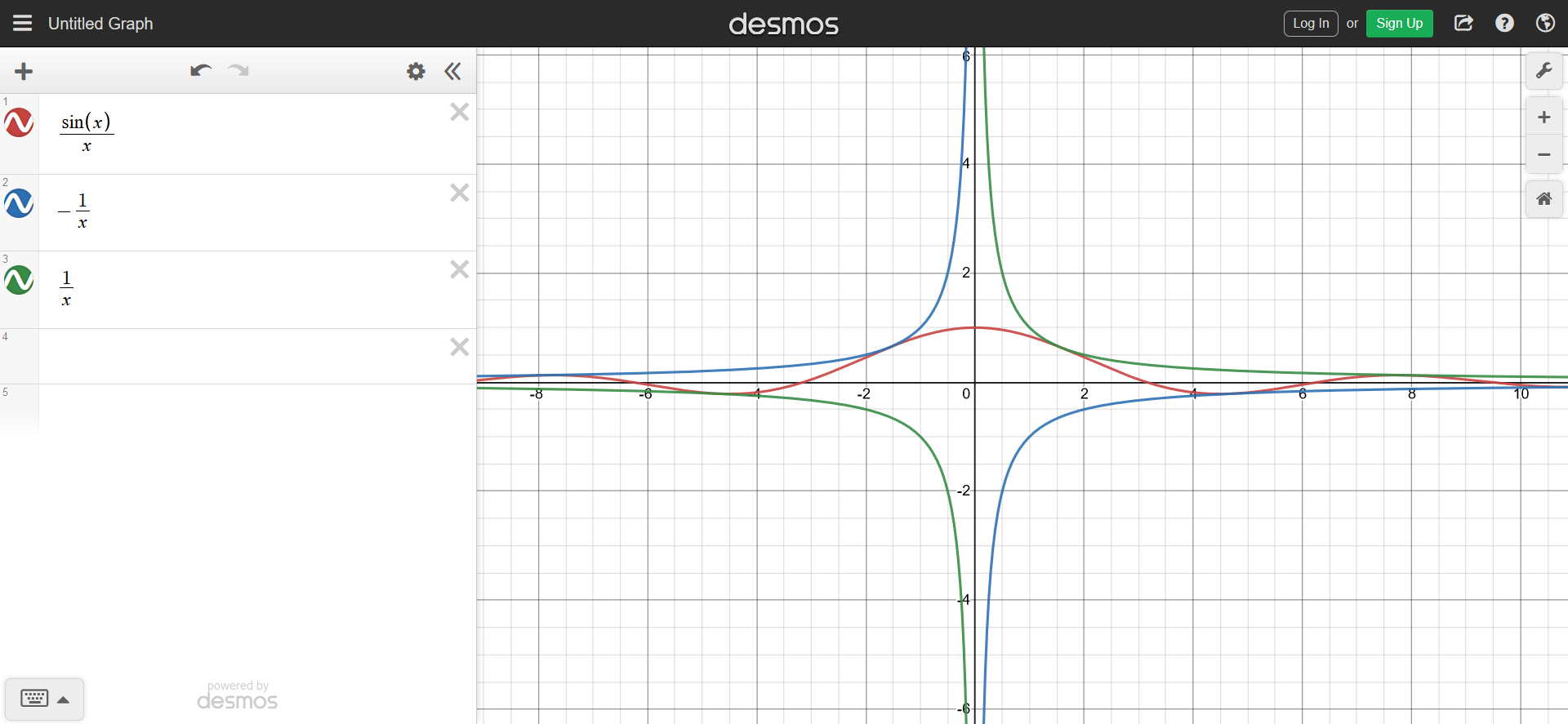Taylor Development
sin(x)/x
Take 5 to 10 minutes to try and graph .
Then verify you drawing with a graphing tool like Desmos.
Did you get it right ? Or are some parts completely off ? If so, can you imagine why they are the way they are ?
Solution
First varies between and , and therefore varies between and . Our graph will look like the graph of , but it will be bounded by the graphs of and .

Then, around 0 : and are very similar (we say that they are equivalent and we write it )

And since dividing a number by itself gives , as we get close to 0.
One objection might be that we are dividing by which is almost , so the result should tend to infinity ; but actually since is also very close to 0, they compensate each other and the result tends to 1 because .